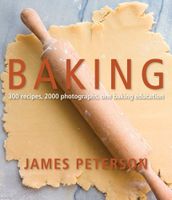Advertisement
Kneading the Dough
Appears in
Published 2009
Kneading activates the gluten in the dough, then smooths out the strands of gluten so the dough is cohesive. Salt and butter are usually added to the dough during the kneading. This keeps the salt away from the unmixed yeast and prevents the butter from melting.
If you’re kneading by hand, it is hard to overknead; but if you’re using a machine, it is easy to overwork the dough, which breaks apart the gluten strands, or overheat the dough, especially when using a food processor. Properly kneaded bread dough is smooth—as a baby’s bottom is an accurate cliché—and elastic. If you pinch a piece with two fingers and pull it away from the rest of the dough, the dough should stretch into a thin translucent “window” without tearing; this is known as the windowpane test. If the dough is firm, it will spring back to the touch; if you make an indentation with your finger, the indentation will fill up.

